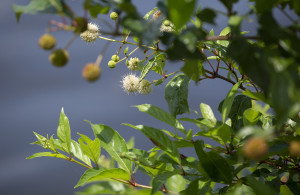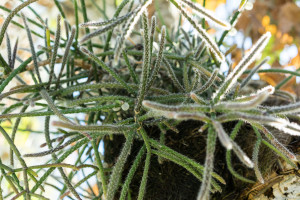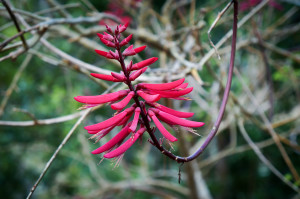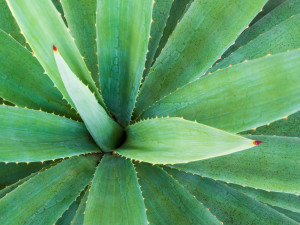 The buttonbush is a deciduous, multi-stemmed shrub or small tree that produces flower heads. It is part of the coffee family (Rubiaceae).
The buttonbush is a deciduous, multi-stemmed shrub or small tree that produces flower heads. It is part of the coffee family (Rubiaceae).
The shrub’s flower heads have tiny, tubular, white flowers that grow in a sphere shape. It looks like a pincushion. The flowers bloom from June to August. The flowers produce green and brown nutlets, which are ripe in the fall. They stay on the plant throughout the winter. Different animals, ducks, and birds eat this fruit – more than 50 species, in fact. Although, it is poisonous to humans and livestock. Hummingbirds, butterflies, insects, and honey bees feed off this plant’s nectar.
This plant has dark green, glossy leaves that are two to six inches long and one to three inches wide. In the fall, the leaves turn light green or yellow.
It can be found in forests, around ponds and streams, and swamps. This plant loves moist soils and likes mostly sunny areas. It can live in water up to three feet if flooding occurs. However, it does not tolerate salt water well.
Many animals and ducks use this plant for nesting or for cover in the wild.
This plant can grow 10 to 20 feet in the Everglades.
Explore the Everglades by Private Airboat Tour
If you love flowers and plants, you need to get out and explore the Everglades – there is no place like it on Earth. You need to see these beautiful plants up-close-and-personal!
A great way to view flowers in the Everglades is on an airboat tour. Even if you don’t see a buttonbush, there will be so many other flowers, plants, and wildlife you will see and learn about on your trip.
If you’re ready to explore the Everglades, jump on a private airboat tour! You’ll have a fun day full of exciting memories to share. To book an airboat tour, call Captain Mitch’s Airboat Tours at 800-368-0065 or click our Private Everglades Airboat Tours page.
 Cacti in the Everglades? Huh? I thought cacti grew in deserts. They do, but they also thrive in tropical and subtropical environments. In fact, there’s many species of cacti that are native to the Everglades.
Cacti in the Everglades? Huh? I thought cacti grew in deserts. They do, but they also thrive in tropical and subtropical environments. In fact, there’s many species of cacti that are native to the Everglades. The coral bean is a native flower plant to the Everglades. It blooms from spring until fall. It has red, tubular flowers that attract butterflies and hummingbirds. In the fall, its seed pods mature and turn nearly black. These seed pods split open to reveal red seeds inside. The coral bean’s seeds are poisonous.
The coral bean is a native flower plant to the Everglades. It blooms from spring until fall. It has red, tubular flowers that attract butterflies and hummingbirds. In the fall, its seed pods mature and turn nearly black. These seed pods split open to reveal red seeds inside. The coral bean’s seeds are poisonous. What comes to mind when you think of a succulent? A pretty, little greenish-blue plant that lives in a tiny pot in your house? Succulents in the home is popular at the moment. However, many succulents are actually native to the Everglades.
What comes to mind when you think of a succulent? A pretty, little greenish-blue plant that lives in a tiny pot in your house? Succulents in the home is popular at the moment. However, many succulents are actually native to the Everglades.





